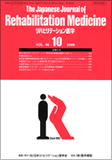Japanese
English
- 販売していません
- Abstract 文献概要
- 1ページ目 Look Inside
- 参考文献 Reference
Background
Chronic spinal pain is a challenging problem to both physiatrists as well as for our patients. The clinician needs to conceptualize a process of evidence-based diagnosis and treatment. A recent review shows that the patients with intractable low back pain (LBP) without radiological evidence of disc protrusion, were evaluated utilizing controlled, double diagnostic blocks, had etiology from facet joints, discogenic pain, sacroiliac joint (SIJ) pain, and segmental nerve root pain. In 19% of those patients, no specific cause was defined.1,2) On the basis of the advances of modern imaging technology, discovery of chemical mediators, reported success of minimally invasive treatments, and the unique training program of physical medicine and rehabilitation, spinal intervention becomes a fast-growing field of practice for physiatrists.
Background
Chronic spinal pain is a challenging problem to both physiatrists as well as for our patients. The clinician needs to conceptualize a process of evidence-based diagnosis and treatment. A recent review shows that the patients with intractable low back pain (LBP) without radiological evidence of disc protrusion, were evaluated utilizing controlled, double diagnostic blocks, had etiology from facet joints, discogenic pain, sacroiliac joint (SIJ) pain, and segmental nerve root pain. In 19% of those patients, no specific cause was defined.1,2) On the basis of the advances of modern imaging technology, discovery of chemical mediators, reported success of minimally invasive treatments, and the unique training program of physical medicine and rehabilitation, spinal intervention becomes a fast-growing field of practice for physiatrists.

Copyright © 2009, The Japanese Association of Rehabilitation Medicine. All rights reserved.


